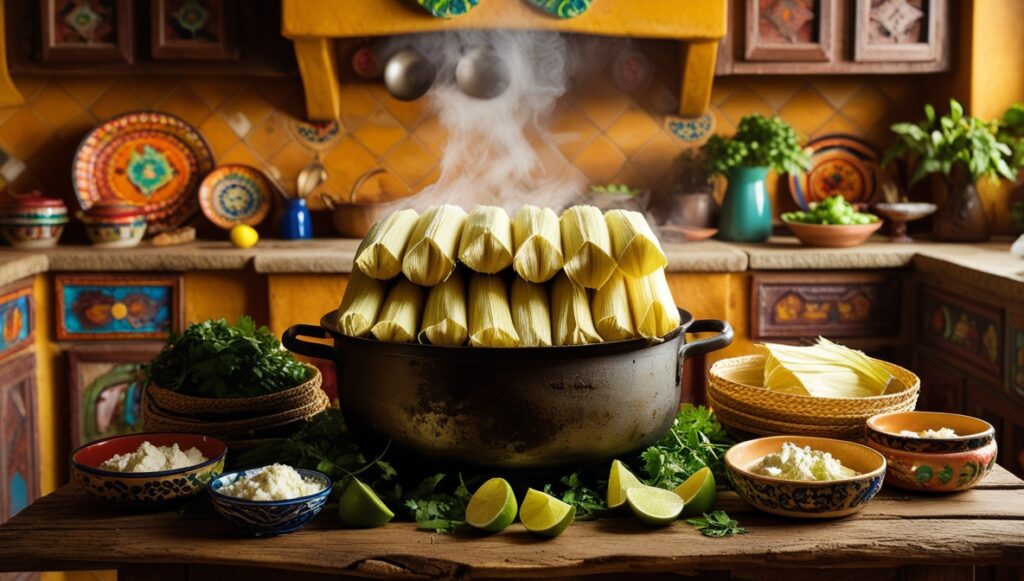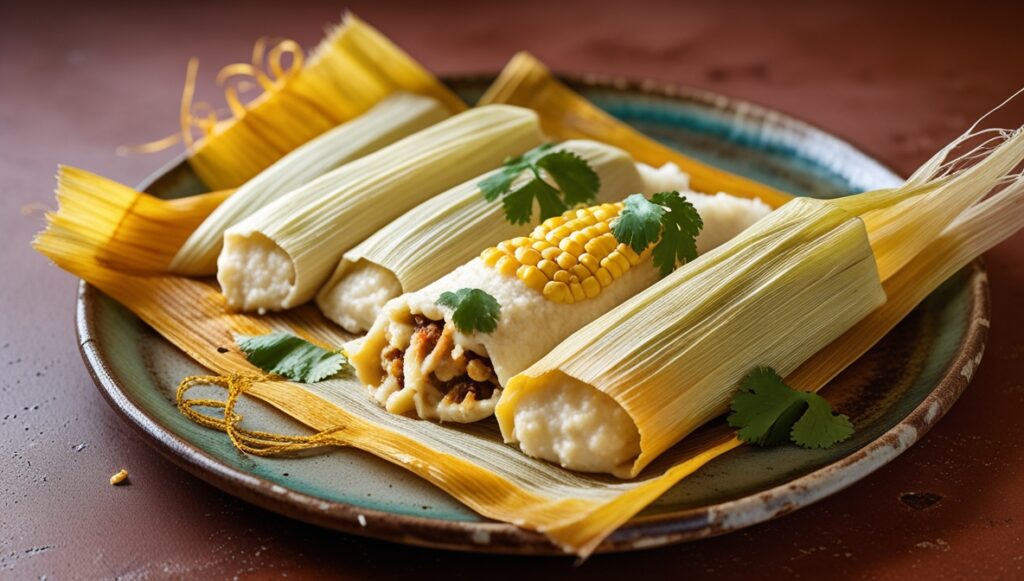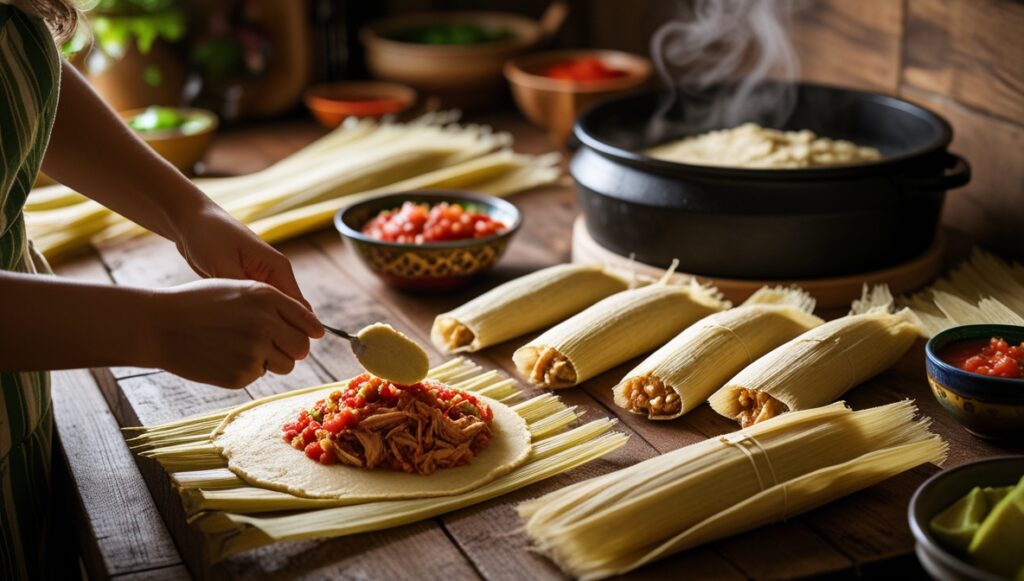Introduction
Among the many Famous Foods in Mexico, few dishes represent its heart and history better than tamales. Wrapped in corn husks or banana leaves, these delightful bundles made from masa (corn dough) and flavorful fillings go beyond food—they’re a cherished part of Traditional Mexico Food culture. Whether enjoyed during festivals or family dinners, they symbolize togetherness and culinary heritage.
Why Are They So Loved?
These iconic treats are deeply tied to tradition and community:
-
Rooted in centuries of cultural practices and celebrations
-
Adaptable with endless regional and personal variations
-
Comforting, flavorful, and perfect for both special occasions and everyday cravings


History & Cultural Significance
With origins in ancient Mesoamerican civilizations like the Aztecs and Maya, tamales were originally created as nourishing, portable food for warriors and travelers.
A Glimpse into the Past:
The word comes from “tamalli” in Nahuatl, meaning “wrapped food.”
Once considered ritual offerings filled with turkey, fish, or beans
Spread across regions with diverse ingredients and techniques
Still a Festive Favorite:
Essential during Día de la Candelaria, Christmas, Las Posadas, and Día de los Muertos
Making them is often a social event, known as a tamalada—a cherished family tradition
Ingredients & Regional Variations
Basic Ingredients:
Masa harina (corn flour), lard or vegetable shortening
Fillings: meat, cheese, beans, mole, or fruits
Wrappers: Corn husks or banana leaves
Regional Specialties:
Oaxaca: Mole-filled tamales steamed in banana leaves
Yucatán: Tamales Colados, smooth and delicately steamed
Sweet Versions: Tamales de Dulce, with cinnamon and raisins
Salsa Varieties: Red or green with shredded meats
Creative Twists:
Vegan options with jackfruit or mushrooms
Dessert-inspired creations like chocolate or pumpkin
International chefs blending global flavors into this traditional dish
Cooking Process & Difficulty Level

Difficulty Level:
Intermediate – Requires patience and multi-step preparation, but achievable at home.
Basic Cooking Steps:
Soak corn husks in warm water until soft.
Prepare masa dough: mix masa harina, lard, broth, baking powder, and salt until fluffy.
Make fillings: cooked meats, sauces, or sweet elements.
Assemble: Spread masa on husk, add filling, fold and tie.
Steam upright for 1–1.5 hours until firm and cooked.
Where to Eat Tamales in Mexico
If you’re wondering Where to Eat Tamales when in Mexico, your taste buds are in for a treat. From street corners to award-winning restaurants, they’re everywhere.
Must-Try Spots:
Tamales Doña Emi – A traditional hotspot in Mexico City
Tamales Madre – A gourmet twist on classic favorites
Mercado de la Merced – Legendary for its street-style offerings
Los Danzantes in Oaxaca – Known for mole-filled excellence
Street vendors in Veracruz and Chiapas – Local flavor at its best
Even fine dining establishments like Pujol (by Enrique Olvera) serve refined versions that elevate this Traditional Mexico Food to haute cuisine.
Pairings & Side Dishes
Enhance your meal with these classic Mexican drinks and sides:
Drinks:
Atole or Champurrado – Warm corn-based beverages
Mexican Hot Chocolate – A comforting, spiced classic
Horchata or Agua de Jamaica – Cool and refreshing
Sides:
Salsas – From tangy tomatillo to fiery habanero
Pickled vegetables – Jalapeños or mixed escabeche
Refried beans or Mexican red rice
Fun Facts
Over 500 regional styles exist across the country
February 2 is officially Tamale Day (Día del Tamal)
The largest one ever made weighed over 150 kg
Beloved by stars like Salma Hayek and Eva Longoria, who often share family traditions online
Nutrition & Health Benefits
Though indulgent, tamales offer balanced nutrition when made thoughtfully:
Rich in energy-providing carbs
Filled with lean proteins, fiber, and vegetables
Naturally gluten-free
Adaptations:
Vegan versions with olive oil and veggie fillings
Lighter recipes with reduced fat and sodium
Trendy “keto” versions with almond or cauliflower masa
Best Tamales Recipe (Simple & Delicious)
Looking for the Best Tamales Recipe to try at home? Here’s a beginner-friendly guide:
Ingredients:
2 cups masa harina
1½ cups broth (chicken or vegetable)
½ cup lard or shortening
1 tsp baking powder
½ tsp salt
1–2 cups filling (like chicken with salsa verde)
20 soaked corn husks
Instructions:
Whip the lard until fluffy
Mix masa harina, baking powder, salt, and broth
Spread 2 tbsp dough on each husk, add filling
Fold sides and bottom, and place upright in steamer
Steam for 60–90 mins. Let rest 10 mins before serving
Tips: Use chilled lard for fluffiness. Add more broth if the dough feels dry.
Global Influence & Similar Dishes
Though rooted in Mexico, the concept of tamales has inspired similar dishes worldwide:
Hallaca (Venezuela) – With raisins, beef, and olives
Zongzi (China) – Sticky rice in bamboo leaves
Humitas (South America) – Sweet corn masa steamed in leaves
Dolma (Middle East) – Rice in grape leaves
Onigiri (Japan) – Rice balls wrapped in seaweed

